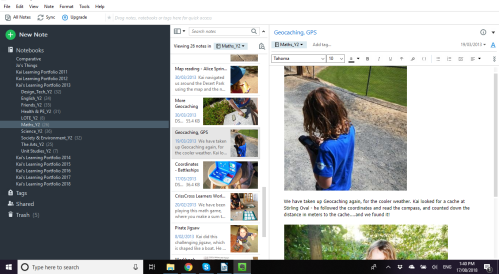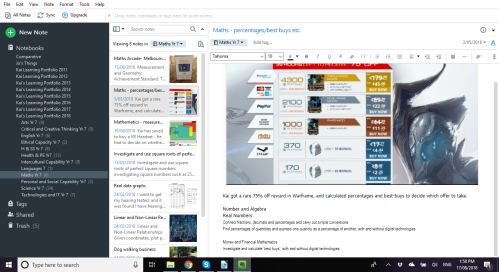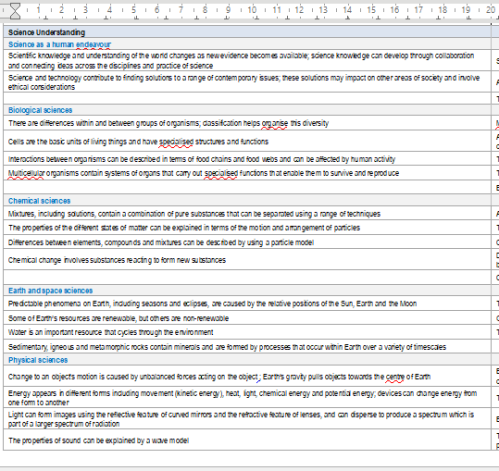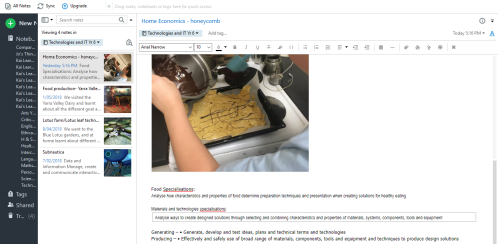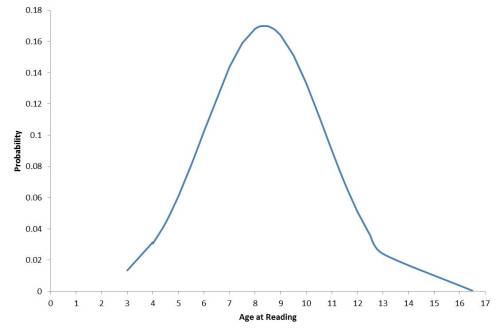In response to a recent, lengthy, and at times, heated, discussion on Unschooling Q & A on Facebook, I am inspired to write a post about hand-writing.
Not ‘writing’, but the actual physical act of picking up an implement (biro, pencil, etc) and using it on a medium (paper, cardboard, whatever!) to make words. Hand-writing.
This card was written by my 11 year old a couple of weeks ago for Father’s Day. I have his complete permission to share it – he knows why i’m doing so.
(UPDATED – the card photo disappeared, and I can’t find the original – this writing is from Kai’s D & D character sheet, December 2017)

Does the level of his writing ability shock you? Are you newer to unschooling, thinking ‘Agggh! I couldn’t cope if my 11 year old wrote like a 4 year old on a bad day!’ Are you thinking, ‘But hand-writing is an essential skill!’.
If you are thinking any of those things, you are completely normal! And I certainly would have thought all those things myself when I was new to unschooling (probably a few years into it, to be honest!).
Our kids aren’t us!
I grew up in the 1970’s. I went to a private all girls school. We wrote with ink pens. Hand-writing was a BIG deal. There was always some unspoken competition about who had the best and neatest hand-writing in the class (it was never me, though my writing isn’t terrible!).
I still have that lump on the middle finger of my right-hand that you get from writing all the time. That’s a deformity that came in school and never went – not great, when you think about it! Most people my age have it.
Of course, with the advent of typewriters, then word-processors, then computers, laptops, iPads, hand-writing has become less and less used. Less and less important to every day life. I write my shopping lists on my phone. Even a lot of schools don’t focus on hand-writing skills anymore.
But, regardless, many people my age still think hand-writing is an important skill.
The person who wrote the post on Unschooling Q & A thought so for a variety of reasons. Her main argument was that people remember better when they write, compared to when they type notes (which, if it’s true, is only really important in school or college, and we are unschoolers…but still…). She referred to a study. I’ll get to that later.
She tried to convince us she used hand-writing in her real life all the time. But refused to give any examples.
Mostly, she was shocked at the notion that her son (11 – same age as Kai) might NEVER want to learn how to hand-write. This thought hadn’t occurred to her. She thought eventually it would just ‘come’.
The truth about hand-writing
In a house full of books, full of words, full of interesting people and things, reading will just ‘come’ – one way or another. Once a kids brain connects the words to their meaning and sounds – reading does just ‘come’ – and kids get better at it because they are surrounded by words, everywhere, all the time.
But, hand-writing isn’t like that. Hand-writing – to become neat and easy, requires repetitive use – linking the muscles and movement of the hand and remembering how to form letter shapes. This is known as ‘cognitive automaticity’ – the ability to make letters without concious effort. It doesn’t just ‘come’ without practice. Kind of like playing the piano. Or learning to skateboard. Or learning to swim. Or anything that needs a physical practice for you to become fast and good at it, and for it to be easy and ‘automatic’.
There are some studies that conclude that reading and hand-writing are linked. You can’t be good at reading if you aren’t hand-writing. I’m here to tell you (with my sample size of 1! But I know many other unschoolers too!) that that is bunk! Kai is a VERY fluent reader, and very good at spelling. He writes well, in complete sentences, and is using punctuation and correct grammar, all the time to his friends, texts, in game.
Not being able to hand-write has had no observable detrimental impact on his other literacy skills.
There are some studies that more generally say that kids learn to read when their manual coordination improves – when the left and right sides of the brain start talking to each other. That could be true, but that just comes with time. And hand-writing is not the only way of developing fine motor skills and hand-eye coordination! (we all know video games are awesome for that!).
But aren’t kids going to need to hand-write at some point?
The answer to that, honestly, is probably ‘yes’ – but not very often, and certainly not until they are older – maybe as teens? And, as we progress into a more technology driven future – less and less.
In the recent discussion, Jenny Cyphers asked people to list when they had needed to use hand-writing in the past two years. I have further split them into potentially ‘no other option than hand-writing’ and ‘could have used another option’ (like typing, printing, etc).
Here are some of the responses:
No other option
- Doctors forms
- Dentist forms
- Immigration forms at airports
- Application forms for licenses, etc (sometimes there is a ‘fill in online’ and print option, though)
- Marking student work (tutors/teachers)
- Signing deeds for new house, signing a cheque, signing credit card transactions
Could have used another option
- Thank you notes, birthday cards
- Grocery lists and other lists
None of the ‘No other option’ apply to kids. Possibly teenagers would need to fill in some forms – probably it’s likely a parent could fill it in, but the teen might need to sign.
A real life example that came up last year from our own lives – Kai’s passport needed updating. He last got one when he was 5 – they run out after 5 years. When we got the application form, it said he needed to sign it himself, or else we needed to get a doctors letter saying he was ‘incapable’ of signing.
So. We didn’t want to go down the road of the doctor letter. But…working on a signature was potentially going to be a big deal. After asking on Always Learning and getting some great ideas from Joyce, Sandra and others, we came up with a game plan for a signature based on his 3 initials.
He practised for a day or two, until he could mostly replicate it, and signed his passport application. We took it in to the Post Office. He had to sign again – in front of the Post Office guy – because some of his signature was out of the lines!

He used that same signature to open a bank account in his own name earlier this year. He says he can’t remember how to sign it now….but if he needs to, he’ll practice again.
So. We already know there are going to be instances when Kai needs to write, himself. Right now, they are very, very few and far between. In his 11 years, it’s only come up as a necessity twice, and we managed!
When and how will they learn to hand-write?
In the post that started all this – the Mom was looking for reassurance that her kid would eventually learn to write, the way he’d learnt to read. She wanted us to tell stories of how our kids had eventually come to writing.
Many people (myself included) couldn’t reassure her in that way. Some people with grown children also reported that their adult kids don’t really like writing, and find it hard. Honestly, i’m fairly sure we all know adults who went to school who are like that!
She said (in reference to when he’d pick up and/or need hand-writing) ‘I never considered ‘Never’ as an option’.
I get it. That is scary to contemplate! Especially when you went to school when we did and hand-writing was a big deal. I needed to deschool big-time around writing..and (shame, shame!) there have been times in the past where I tried to get Kai to write – cards, notes, shopping lists…
But I think, in reality, ‘never’ is NOT really a valid option. There will be times our kids, as they get older, WILL need to write for something or another. And they’ll manage. It won’t be fun. It won’t be easy. It won’t be neat. But they’ll do it.
And for some of them, for whatever reason, they WILL find a reason to improve. Maybe for a job, maybe for fun (calligraphy, etc), maybe just because they want to. And if they do, it’ll be fast. It won’t take 12 years of schooling and forced writing.
I currently tutor high school science (long-story – I know, I’ve been away a while!).
Here are some writing samples from my tutor kids – the top one is a 13 year old, the bottom two are 16 year olds.

These are kids that have been in the system of forced hand-writing for years. And I have absolutely no doubt that if Kai wanted to improve his hand-writing, in whatever way worked best for him, he could be at their level in days. Not weeks, certainly not years. He’d catch up – and fast! (and, of course, just think what your local GP’s handwriting looks like!)
What the research says
I honestly can’t find a lot of research on why hand-writing is or isn’t important. The Mom in the discussion cited an article that said they found college students retained more information from lectures if they hand-wrote notes, instead of typed them.
Firstly, even if that is true, it doesn’t apply to my 11 year old (nor hers!)…
Secondly, lets have a better look at the methods and data in that research (which you can find here, though it’s only the abstract unless you have a way to get the full text).
Their main ‘argument’ was that students using computers didn’t retain as much information when asked later as students who hand-wrote notes.
In fact, if you look at their results, the laptop users showed slightly higher scores (though not statistically significant) on factual-recall questions. The note takers did better on ‘conceptual-recall’ questions (which wouldn’t relate to performance in University as it’s almost all factual-recall in tests) – conceptual-recall was confounded by which lecture the participant watched also.
The rest of the results don’t really relate to any kind of memory performance, just a shonky correlation between number of words and type of medium (pen or laptop). So, in my opinion, I don’t think this is a well designed study, and I don’t find the results at all convincing.
Also, it was conducted in 2014, on then college age students – so an average age of about 20, let’s say. Those kids were therefore in primary school in the early 2000’s. Hand-writing would have still been predominant. There were no iPads, no iPhones. Computers and the internet were basically in their infancy. Those kids did NOT have the experience our kids are having.
I’m not the only one to question the study. This article examines the research and concludes ‘What can or should we tell students concerning laptop notetaking? We can say that based on a single study, in which students listened to short 15-20 minutes lectures on general topics, laptop notes tended to be more verbatim than handwritten notes.’
‘More verbatim’ is literally the only concrete finding. Laptop users wrote notes that were almost exactly the same as what they heard. Hand-writers didn’t have time to do that.
When I was at Uni, I took hand-written notes. But the only way I remembered what was in those notes, was to pour over them again the night before exams (and then promptly forget them again the next week!). I can’t compare because I didn’t have a laptop, but I can’t imagine the method of note taking in lectures made one jot (pardon the pun!) of a difference in the exam…it was revision the night before that did that!
Here is another article examining the same research.
Aside from this, I can’t find much else. If anyone still reads this blog and finds more, I’d love to see it.
Peoples highly romanticised personal opinions!
I can find plenty personal opinion though. Mostly from people my age (or even older!), reminiscing and romantacising hand-writing, the ‘good-old days’, and grappling at finding reasons why it’s still important.
Take this article in The Guardian, for example. The author states he had ‘posters of Debbie Harry and Kenny Dalglish’ – that makes me pretty certain we are of the same vintage, growing up in the same country! I also have old school books in my Mum’s house. I had a much less romantic reaction to mine, though!
To begin with, I thought we were on the same wavelength. The author said after he posted ‘why is hand-writing important’ on Twitter, “Everyone agreed that, yes, handwriting was important but few could pin it down to any one reason: and I think that is a problem when we are trying to convince our students.”
Then came …a paragraph of apparently ‘irrefutable’ proof that handwriting was important.
“it is ludicrous to say that teaching handwriting is irrelevant. There is far too much evidence out there which reveals the cognitive benefits. Handwriting improves the development of motor-skills and is absolutely crucial in enhancing hand/eye coordination. ….. the practice of slowing down and thinking about our thoughts in order to write them with a pen or pencil uses more brain power. Educationally I think the case is irrefutable.”
Yeah? Nope! There is little to no evidence that ‘reveals a cognitive benefit’. Hand-eye coordination can be developed in a myriad of ways, not least using a keyboard and mouse for various things (Kai’s also been doing a lot of whittling and wood burning…nothing wrong with his hand-eye coordination!). And I find no compelling evidence that writing things down with a pen uses more brain power.
But later in the article, it comes down to this – the author sees handwriting as a ‘very personal piece of art’. It’s a flowery view, clouded by his own upbringing and use of hand-writing in an age where he had no other choices.
Hand-writing can be quite beautiful. I love calligraphy (to look at – i’m not that keen on trying it out – though I do have pens!). But it’s not a good reason to force a kid to learn it when it doesn’t apply to their actual real lives.
It’s not the view our kids will have. They will probably see something completely different as a ‘very personal piece of art’ – their Facebook page. Their YouTube channel art. Their tattoo’s! Their piercings! Who even knows what they’ll look back on in nostalgia in 20 years!? But I’m fascinated to find out!
A brief Quora thread agrees with me, though it’s not particularly illuminating!
For another interesting view, and also some interesting history on cursive, from an educator – check out this piece in the New York Times.
Though she says handwriting doesn’t matter, she does cite the study I already critiqued, and another study involving only 15 kids, which isn’t even worth thinking about – that’s hardly even a sample size!
In the end – is it affecting my kid right now?
Kai doesn’t live in a vacuum. He’s out and about – with me, with his friends. He sees me write. He watches me fill in forms. He’s had to use his own signature at least twice already.
He KNOWS people hand-write and sometimes there are no other options. Right now, he couldn’t care less if you think his hand-writing is terrible! He knows it is…it’s unimportant to his life and his self-esteem – his self-confidence is good enough that he’s fine with letting random strangers see and judge his writing!
Not being able to hand-write isn’t affecting him …if it did, we’d figure it out. And as I said, I am absolutely 100% certain that if he needed to improve his hand-writing for whatever reason, he could do that in a day or two.
As an the parent of an unschooler – my goal is peace, joy and learning.
So, do *I* think not being able to hand-write RIGHT NOW is affecting Kai’s life so much that I need to force him to learn it? Even if it puts strain on our relationship, disrupts our joyful life, takes him away from the things he’s learning right now? No – absolutely not. I see hand-writing as about as relevant to his life as knowing algebra and balancing chemical equations – not relevant at all. And, similar to both those things, it’s something he can learn very fast, should he ever want or need to.
If anyone is reading – I’d love to know whether other people use hand-writing (with no other option) more often in their day to day life? And when and why has independant hand-writing been required of your kids?





